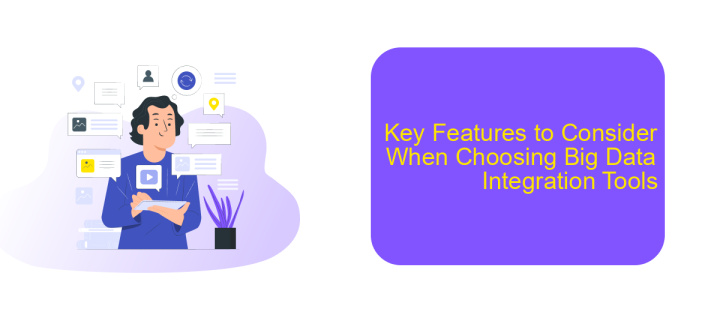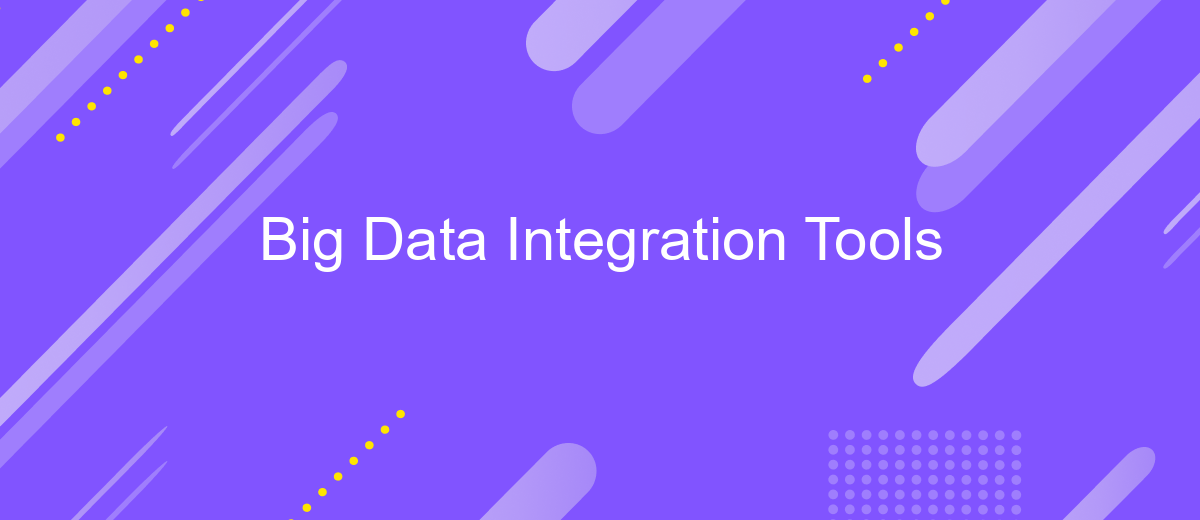Big Data Integration Tools
In today's data-driven world, businesses are inundated with vast amounts of information from diverse sources. Big Data Integration Tools have emerged as essential solutions to seamlessly merge, process, and analyze this data, enabling organizations to gain valuable insights and make informed decisions. This article explores the top Big Data Integration Tools, their features, and how they can transform data management strategies.
Introduction to Big Data Integration Tools
Big Data Integration Tools are essential for businesses looking to harness the power of massive datasets. These tools facilitate the seamless merging of data from various sources, ensuring that information is accessible, reliable, and actionable. With the increasing volume, variety, and velocity of data, efficient integration becomes paramount for data-driven decision-making.
- Data Extraction: Tools that pull data from numerous sources.
- Data Transformation: Converting data into a usable format.
- Data Loading: Inserting data into a storage system.
- Real-time Integration: Ensuring data is up-to-date.
- API Integration: Connecting different software systems.
An example of a versatile integration service is ApiX-Drive. This platform simplifies the process of connecting various applications and automating workflows without requiring extensive technical knowledge. By leveraging tools like ApiX-Drive, businesses can streamline their data operations, reduce manual efforts, and improve overall efficiency. As a result, companies can focus more on analyzing the data rather than spending time on integrating it.
Types of Big Data Integration Tools

Big Data integration tools come in various forms, each catering to different needs and complexities of data management. ETL (Extract, Transform, Load) tools are fundamental, enabling the extraction of data from multiple sources, transforming it into a usable format, and loading it into data warehouses or other storage systems. Examples include Apache Nifi and Talend, which provide robust platforms for managing large volumes of data efficiently.
Another type is API-based integration tools, which facilitate seamless data exchange between disparate systems through APIs. ApiX-Drive, for instance, is a notable service that simplifies the process of connecting various applications and automating workflows without requiring extensive coding knowledge. Additionally, cloud-based integration platforms like AWS Glue and Google Cloud Dataflow offer scalable solutions for real-time data processing and integration, making them ideal for handling dynamic and large-scale data environments.
Benefits and Challenges of Using Big Data Integration Tools

Big Data integration tools are essential for organizations aiming to streamline their data processes and derive actionable insights. These tools offer numerous benefits, including improved data quality, enhanced decision-making, and increased operational efficiency. By automating data integration, companies can save time and reduce errors, leading to more reliable data analytics.
- Improved Data Quality: Integration tools help in cleansing and standardizing data from various sources.
- Enhanced Decision-Making: Access to comprehensive and accurate data enables better business decisions.
- Operational Efficiency: Automation of data processes reduces manual efforts and errors.
However, there are challenges as well. Implementing these tools can be complex and requires significant investment in both time and resources. Additionally, ensuring data security and privacy during integration is critical. Services like ApiX-Drive can simplify these processes by offering user-friendly interfaces and robust integration capabilities, making it easier for organizations to manage their data effectively.
Key Features to Consider When Choosing Big Data Integration Tools

When selecting a Big Data integration tool, it's crucial to evaluate its key features to ensure it meets your business needs. The right tool can significantly enhance data management, streamline processes, and provide valuable insights.
Firstly, consider the tool's scalability. As your data grows, the integration tool should be able to handle increasing volumes without compromising performance. Secondly, assess the ease of use and user interface. A user-friendly interface can reduce the learning curve and improve productivity.
- Scalability
- Ease of Use
- Data Transformation Capabilities
- Real-Time Data Processing
- API Integration
Additionally, the tool should support robust data transformation capabilities to convert raw data into meaningful insights. Real-time data processing is also essential for timely decision-making. Tools like ApiX-Drive can facilitate seamless API integration, allowing for automated data flows between various platforms, thus enhancing efficiency and reducing manual errors.


Conclusion
In conclusion, the landscape of Big Data integration tools is rapidly evolving, offering businesses a plethora of options to effectively manage and utilize their data. These tools are essential for transforming raw data into valuable insights, enabling more informed decision-making and fostering innovation. As organizations continue to generate vast amounts of data, the importance of reliable and efficient integration solutions cannot be overstated.
One such solution is ApiX-Drive, which simplifies the process of integrating various data sources and automating workflows. By leveraging platforms like ApiX-Drive, businesses can streamline their operations, reduce manual efforts, and ensure data consistency across different systems. As we move forward, the adoption of advanced integration tools will be crucial for companies aiming to stay competitive in the data-driven economy, making it imperative to choose solutions that best align with their specific needs and objectives.
FAQ
What is Big Data Integration?
Why is Big Data Integration important?
What are some common challenges in Big Data Integration?
How can automation tools help with Big Data Integration?
What features should you look for in a Big Data Integration tool?
Strive to take your business to the next level, achieve your goals faster and more efficiently? Apix-Drive is your reliable assistant for these tasks. An online service and application connector will help you automate key business processes and get rid of the routine. You and your employees will free up time for important core tasks. Try Apix-Drive features for free to see the effectiveness of the online connector for yourself.

